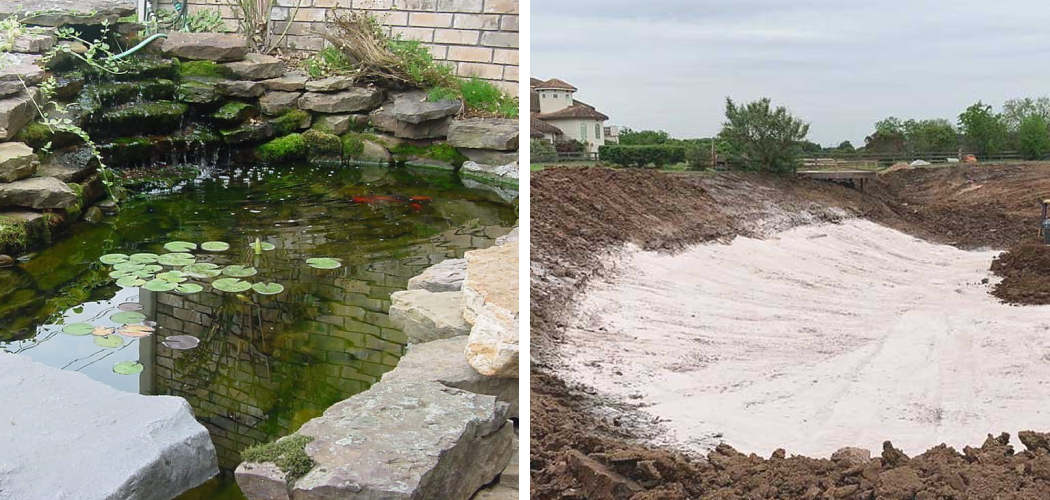A leaking pond can be both a frustrating and costly issue, but it doesn’t have to be! If you have a pond on your property, it’s nice to be able to enjoy the beauty and tranquility of the water feature.
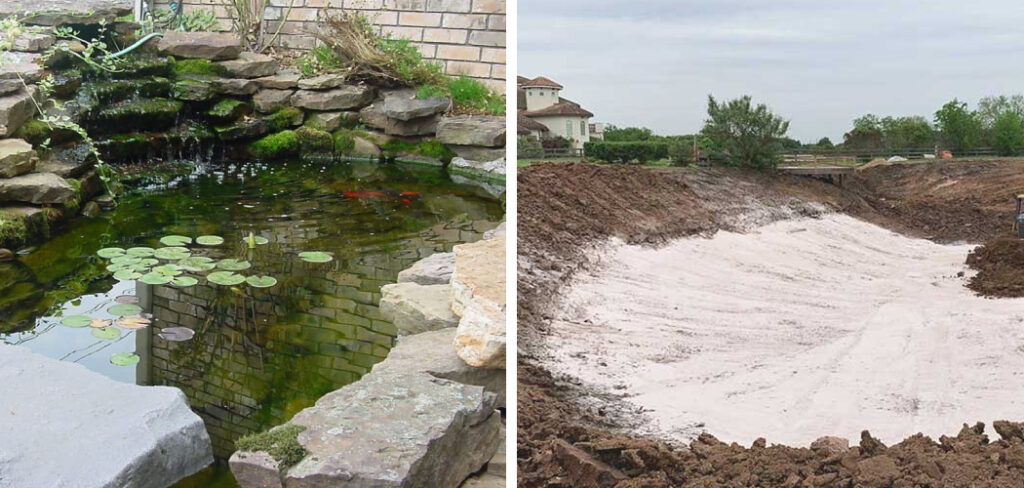
However, if your pond is starting to leak, it can cause an array of problems like flooding, erosion, and damage to surrounding property. Fortunately, there are several ways how to seal a leaking pond that you can seal a leaking pond without having to completely drain or rebuild your body of water.
With some careful attention and a few steps that you can easily complete on your own, you can nip the leak in the bud quickly and get back to focusing on the fun aspects of having a pond.
In this blog post, we will discuss some proven methods for sealing a leaking pond, such as using sheet piling or geotextiles and layering bentonite and other soils. Read on for more detail about how you can effectively seal a leaking pond!
What Causes Pond Leaking?
1. Improper Installation
The most common cause for pond leaks is improper installation. If the liner is not properly installed, or if a hole develops in the bottom of the pond, water can easily escape from your lake or pond and create a mess.
2. Groundwater Pressure
If your pond is built in an area with high groundwater pressure, this can force water up through the walls and create a leak in the liner. This is especially common if your pond has clay soils that easily erode when wet.
3. Damaged Liner
Finally, damage to the liner itself can create a leak. This could be due to aging, animal activity, or other causes. The liner can be easily patched, but this will only solve the issue temporarily.
Required Items
• Sheet piling or geotextiles
• Bentonite clay
• Sand and gravel
• Soil
10 Ways on How to Seal a Leaking Pond
1. Sheet Piling or Geotextiles
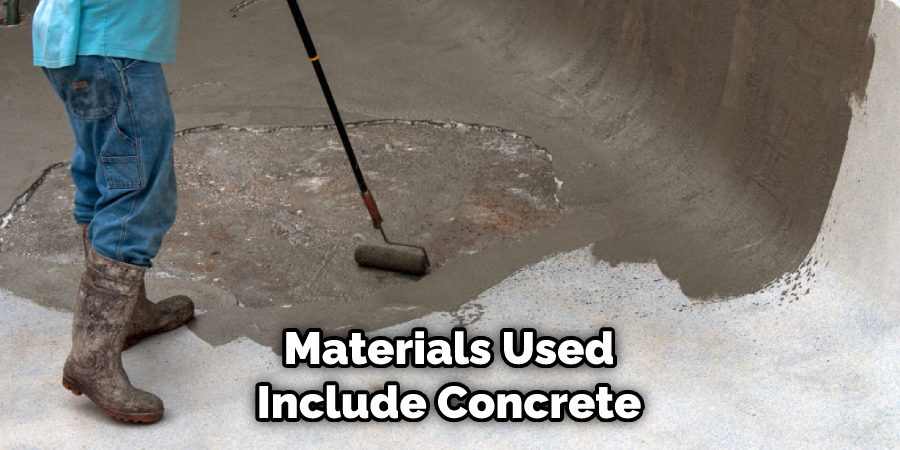
These are long strips of material that can be staked into the ground around the pond. They act as a barrier to prevent water from seeping out of the edges. The materials used include concrete, wood, plastic, and fabric.
2. Bentonite Clay
This is a special type of clay that absorbs water and swells up when it comes into contact with moisture. When applied around the edges of your pond, bentonite helps to seal any potential leaks by forming an impermeable barrier between the soil and the water.
3. Layering Sand and Gravel
By layering sand and gravel around the pond, you can help to create a filter that will prevent water from escaping. The top layer should be sand, followed by gravel, and then soil. This helps to keep the water in the pond while also providing excellent filtration for your aquatic plants and wildlife.
4. Soil
This is a great way to create an effective seal around the outside of your pond. Simply be sure to use soil that is free of sediment and clay, as these can easily clog up the filter system and leak into the pond water.
5. Sealant
A good quality sealant can also be used on the edges of your pond to create an effective barrier between the water and the soil. Sealants can come in many forms, from liquid sprays to caulk strips that are easily applied with a brush or roller.
6. Pond Liners
If you find that your existing liner is beyond repair, then you may need to invest in a new one. Make sure that your new liner is properly fitted, as this will help to avoid any potential future leaks from forming.
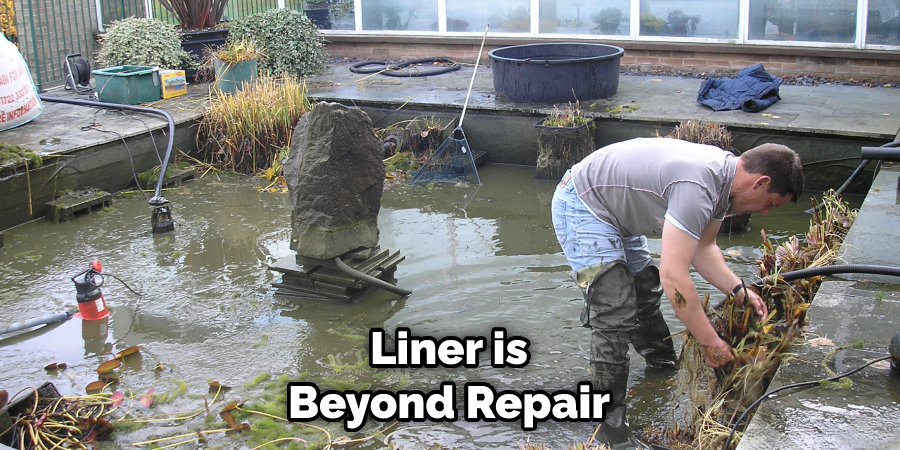
7. Pumps and Filters
Having an effective pump and filter system installed can help to keep the water levels and quality of your pond regulated. This can also reduce the chances of leaky seals by helping to keep the water and soil separated.
8. Erosion Control
If your pond is built in an area prone to erosion, then it is important that you take the necessary steps to protect against this. Some of these include installing sandbags or rock barriers around the edges of your pond, as well as planting vegetation or trees nearby.
9. Maintenance
It is important to carry out regular maintenance on your pond in order to ensure that the liner and other components are working properly. This can include checking for holes or damage, as well as cleaning any debris from around the edges of the pond.
10. Professional Assistance
If you have a large pond, or if you are unsure how to carry out any of the above steps, then it is always best to consult a professional. They will be able to advise on the best materials and techniques for sealing your pond, as well as help to ensure that it is done properly.
By following these steps, you can help to keep your pond water contained and safe from any potential leaks. It is important to remember that regular maintenance and repairs are essential in order to ensure the long-term health of your pond.
8 Maintenance Tips
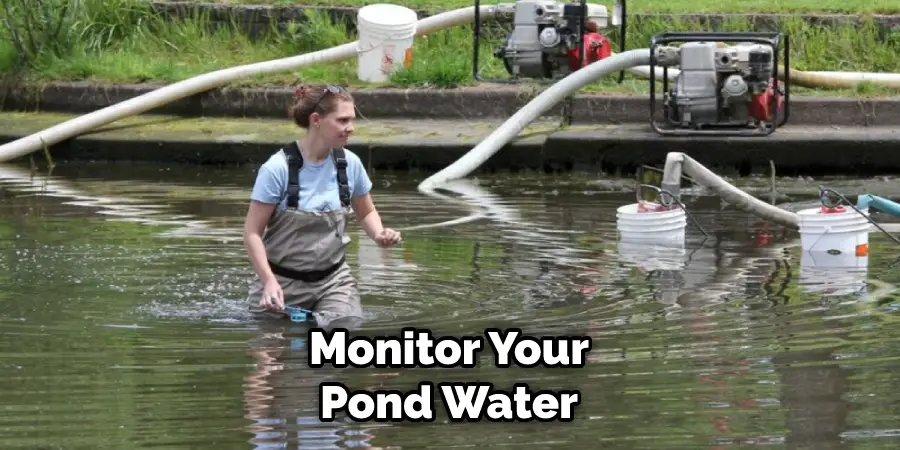
- Monitor your pond water levels regularly, as this is the best way to spot any leaks early on. Also, if your pond is equipped with an overflow inlet, make sure it’s functioning properly. Maintaining a proper water level will also minimize stress on the liner.
- Clear away any debris, like sticks or rocks, that might cut into the pond liner and cause further damage. The debris may also get in the way of spotting any leaks.
- Check all pipes and other outlets around your pond to make sure they’re sealed properly. Replace any faulty seals or broken parts of the system as soon as possible. The pipes should be checked regularly to avoid any water leaks.
- If you have an overflow outlet, make sure the outflow pipe is properly covered with plastic or steel mesh to prevent soil and other debris from entering the pond. The mesh should be replaced at least once a year.
- Examine the liner for any punctures, tears, or weak spots. If you find any, consider replacing the liner before it gets worse with time.
- Make sure to keep the pond away from tree roots that may break through the liner and cause a leak. Consider planting trees at least 10 feet away from the edges of your pond. The pond should also be away from any structures that may cause the liner to tear or wear out.
- If your pond is equipped with a skimmer, make sure it’s working properly and clean it regularly to avoid clogs or blockages that can lead to water leaks. The pond should also be equipped with a continuous waterflow through the skimmer, so it can detect any leaks in time.
- Put all necessary measures in place to avoid having to deal with any chemical or oil spills near your pond, as these can cause unexpected damage and lead to unnecessary repairs. Make sure all chemicals are kept away from the edges of the pond.
By following these steps, you can ensure that your pond is properly sealed and maintained to prevent any leaks. If all else fails, don’t hesitate to seek professional advice or help from an experienced technician. It’s better to be safe than sorry when it comes to protecting your pond!
Frequently Asked Questions
How Much Will It Cost?
The cost of sealing a leaking pond will vary depending on the size and condition of your pond, as well as the type of sealant you choose to use. It is important to get a professional estimate so that you know exactly how much it will cost before beginning the project.
The project may cost anywhere from a few hundred dollars to several thousand, depending on the size and complexity of the job.
What Are Some Signs That My Pond Is Leaking?
If you notice that your pond is losing water more quickly than usual, it could be an indication that it is leaking. You should also check for water escaping through any cracks or crevices in the sides or bottom of your pond, as well as any visible signs of seeping.
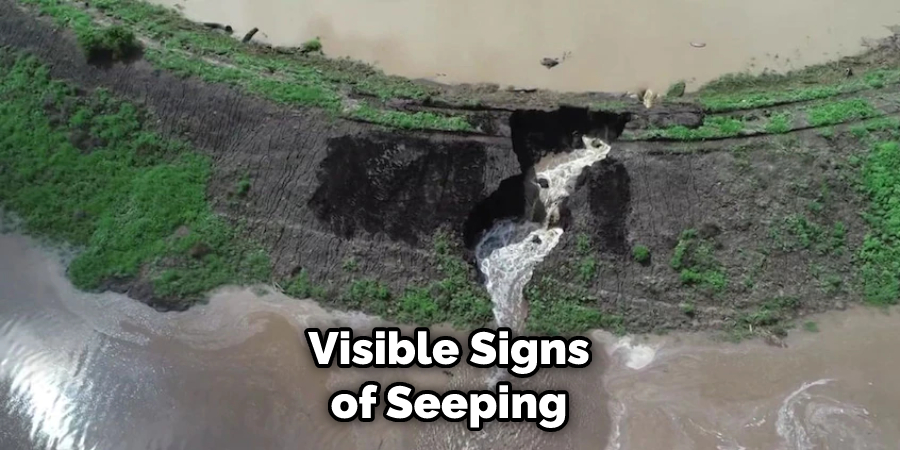
If you notice any of these signs, it is important to get a professional opinion and have the issue addressed promptly.
Conclusion
Sealing a leaking pond doesn’t have to be a difficult process. With the right knowledge and resources, such as waterproof sealers, high-grade brushes and trowels, and some tape or wire mesh, anyone can repair a pond in just a few simple steps.
Although it may take some time and dedication to find the source of the leak and patch it correctly, the results will be long-lasting and worth every ounce of effort.
If you need further help with sealing your pond, don’t hesitate to contact a professional experienced with this sort of job. Now that you know how to seal a leaking pond, you have everything you need to get the job done right! So go ahead and get started; the sooner you do, the safer your fish are sure to be!

